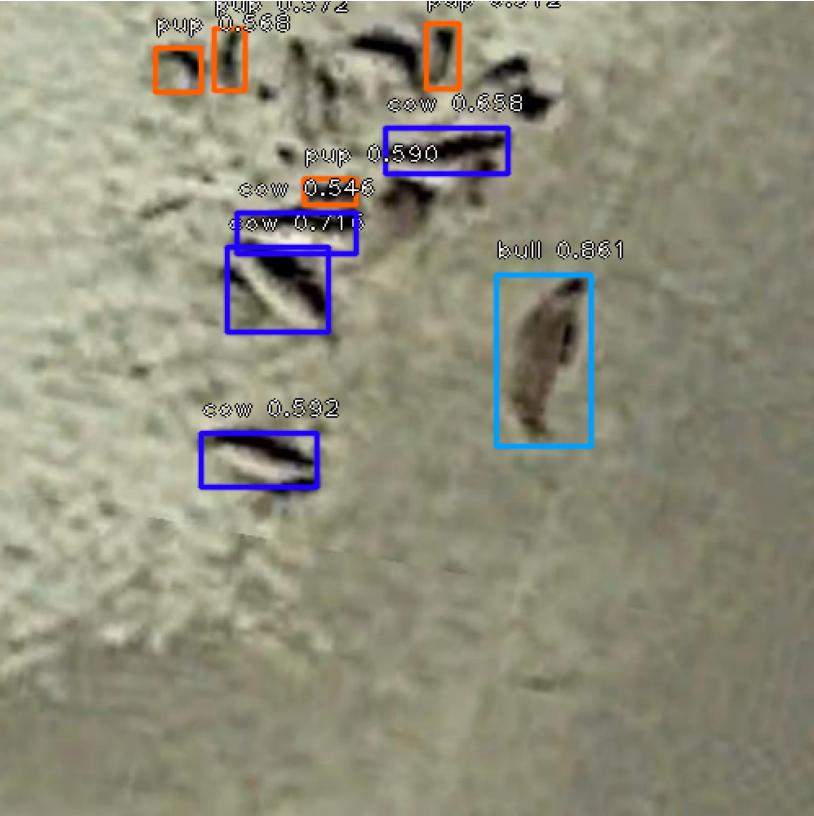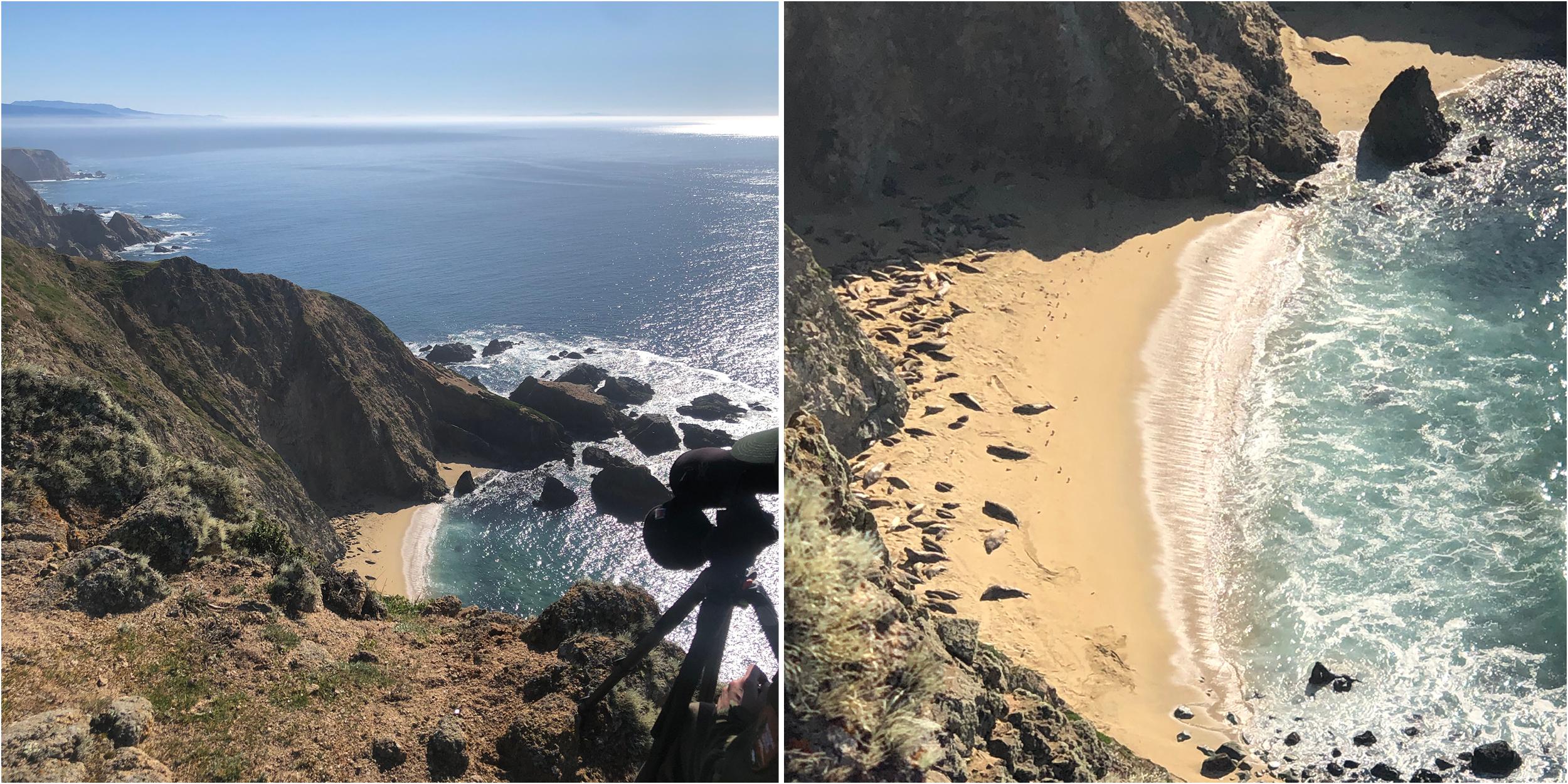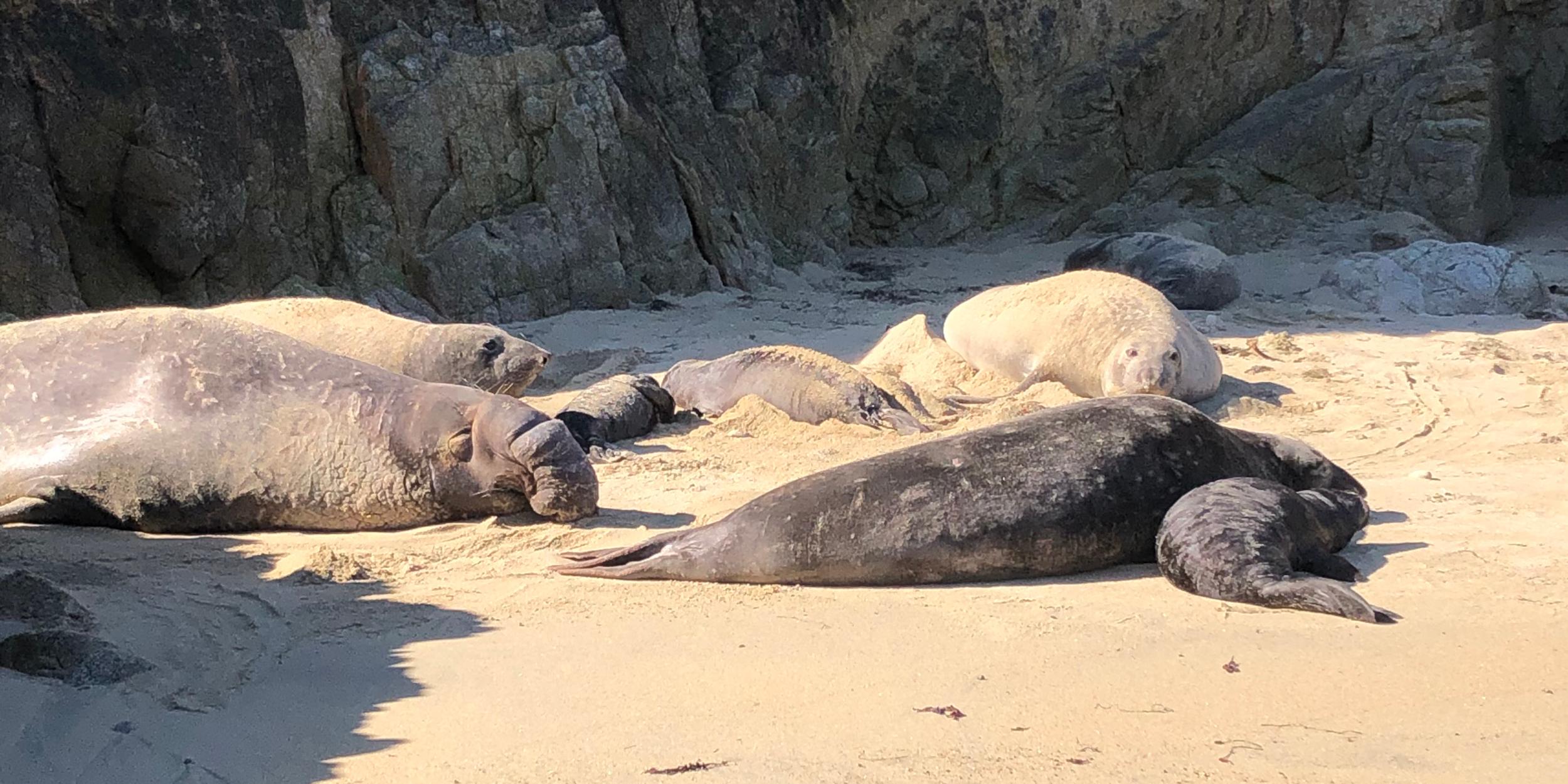
Silas Gifford was an intern at Point Reyes National Seashore in the summer of 2021 when Ben Becker, a marine ecologist and chief scientist for the park, posed the question: Is it possible to monitor elephant and harbor seals remotely? Last week, Gifford presented a Data Science Honors thesis at UC Berkeley exploring how machine learning could assist with obtaining accurate seal counts.
Park staff and volunteers have monitored elephant seals since 1981, gathering data that yields insights about the state of the ocean and health of the species and enabling park officials to predict the prevalence of seals on beaches in the park.
"Silas' analysis is helping the National Park Service understand how data science, remote sensing and artificial intelligence can contribute to a more efficient, accurate and safe seal monitoring program," said Becker.
Developing the prediction model
Gifford created tiles from Google Earth satellite images of the Point Reyes shoreline, zooming in to about 350 feet above sea level. After labeling the seals in those tiles, Gifford used that data to train a prediction model.
Elephant seals presented a greater challenge than harbor seals because multiple age and sex categories are tracked in the counting efforts. Gifford simplified seven categories typically used to three – bull (adult male), cow (adult female) and pup (juvenile) – due to the limitations of satellite imagery.

Gifford identified seals in the tiles by size but also took behavior into account. "A medium-sized seal is probably a cow – unless specific things are happening. For example, immature male seals will haul out by themselves. If there's a seal by itself in a cove, then I labeled it as a bull regardless of size," Gifford explained.
An accurate count of cows is critical, noted Gifford. Seals haul out multiple times a season, but researchers can multiply the peak number of cows by a correction factor to estimate the total population for that breeding season.
Gifford's first model attempt incorrectly identified sunspots in the water as seals, so they developed a second, more accurate iteration that restricted the data to the portion of a tile showing only the beach.
"I can't believe you can see seals from space," Gifford laughed, admitting their first thought about the prospect of counting seals via satellite imagery. "And then I thought, 'OK, you can see them, but I can't believe the image quality is so bad.' It was a little ironic."
Gifford's project lays the groundwork for pursuing machine learning-assisted counts of seals, though they acknowledge that the model, which currently predicts with 60% average precision, could be further refined. "I'm only using freely accessible images right now," added Gifford. "With improved images, I have high confidence that the model would perform more robustly."
"I have been impressed with how Silas took on a tough problem and figured out how to work on the different parts of the data pipeline," said Eric Van Dusen, outreach and technology lead for the Data Science Undergraduate Studies program and lecturer for the honors thesis class.
Improving safety and accuracy
Humans hunted elephant seals almost to the point of extinction 100 years ago. "There's this terrible story," said Gifford. "Smithsonian researchers found eight elephant seals in California in 1892. They were thrilled because they thought elephant seals had been extinct for 10 years – and then they killed seven of the eight and took them back to the museum."
Historically exploited for blubber and fur, today elephant seals are covered by the Marine Mammal Protection Act. "We never want them to be endangered again, so it's important to monitor them," Gifford said. After a 150-year absence, the first breeding pair of elephant seals were spotted in Point Reyes in 1981. Today the population has skyrocketed to approximately 4,000 seals in the park.

Gifford explained that the preferred monitoring method involves looking down at the seals from cliffs, though not all coves are easily viewed from above, and cliffside erosion has limited access to some lookout points. In that case, surveyors cautiously walk on the beach to tally the seals. Manually counting seals requires an enormous time commitment from many volunteers – approximately 900 hours in a season, Gifford calculated.
Having assisted in counts at Point Reyes, Gifford knows how intimidating it is to be within five feet of an elephant seal. "They're huge, and it's really not a good idea to get close to them. It's not likely, but they could charge at you."
Gifford said that the key incentives to develop their model further are greater counting accuracy, increased safety for surveyors and less disruption for seals in scenarios when they cannot be counted from above.
Exploring data science at Berkeley
"I was part of the first freshman class accepted to the data science major at Berkeley," Gifford noted. After completing their third year of undergraduate studies, Gifford will graduate this month and enter the School of Information’s Master of Information and Data Science program in the fall.
Taking advantage of the many opportunities for Berkeley data science students, Gifford participated in the Data Scholars program, which offers community and mentorship for students with identities and backgrounds often underrepresented in STEM fields. This experience proved valuable, connecting Gifford to other students new to data science and leading to Gifford's undergraduate research internship at Point Reyes National Seashore.

Gifford completed their year-long research and thesis project on remote seal monitoring through the Data Science Honors program. "I loved Silas' project because I love Point Reyes, and I have been out to those cliffs where the spotters are counting animals,” Van Dusen said. “Every year, I am surprised by the breadth of topics that honors thesis students apply their data science skills to."
Gifford plans to revisit their model over the summer and explore improvements. "I have a newfound appreciation for the invisible labor that goes into making machine learning datasets,” reflected Gifford. “Completing my thesis showed me that I can do research and work on interdisciplinary teams. Being in almost complete control over my research has really boosted my confidence.”
